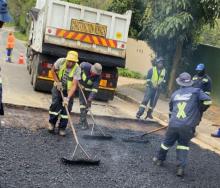The rise in South Africa’s purchasing managers’ index (PMI) for the manufacturing industry suggests that the rebound in the sector has picked up pace, writes emerging markets economist, Virag Forizs, for Capital Economics.
“But headwinds facing the industry and the wider economy mean this strength is unlikely to last.”
Figures released this morning by Absa and the Bureau for Economic Research put their manufacturing PMI at 58.1 in February – up from 57.1 in January. “The strongest reading since April 2007,” says Forizs.
“Most analysts expected the manufacturing PMI to fall back and the outturn was stronger than the most optimistic forecast collected by Bloomberg, at 57.3.”
She adds that “the PMI signals a continued rebound in manufacturing activity following repeated disruptions in the recovery”.
“Most recently, the Omicron virus wave weighed on activity.
“And prior to the latest outbreak, strikes in the steel sector dampened output last October and violent unrest last July hit the sector hard.”
Looking at the data more closely, Forizs says it suggests that the manufacturing sector has supported growth in 2022 so far, after acting as a drag on the economy in last year’s fourth quarter.
“The business activity component rose from 56.6 in January to 59.6 in February. Other PMI components boosted the headline index too.
“The new sales orders component rose from 55.5 in January to 56.9 in February. “And the employment component increased too, from 49.2 to 50.7 over the same period, raising hopes about improving labour market conditions.”
Unfortunately, survey respondents’ expectations about future business conditions are likely to turn more negative, Forizs adds.
“The PMI component tracking expected business conditions in six months’ time fell back from a near four-year high of 71.3 in January to 69.5 in February.
“We suspect that the domestic economic conditions will remain weak, with persistent power cuts and fiscal austerity.
“And the Russia-Ukraine conflict threatens to reverse recent improvements in supply chain disruptions as well as dampen broader economic confidence.”
Sticking with the growing crisis in Eastern Europe, Forizs says price pressures are almost certain to rise on the back of current tensions.
“In February, the purchasing price component returned to 89.8, a six-year high it reached in December.
“And high commodity prices will push up producer price inflation further.
“Against this backdrop, we expect that the monetary tightening cycle will continue with a 25 basis point interest rate hike, to 4.25% in March.”













